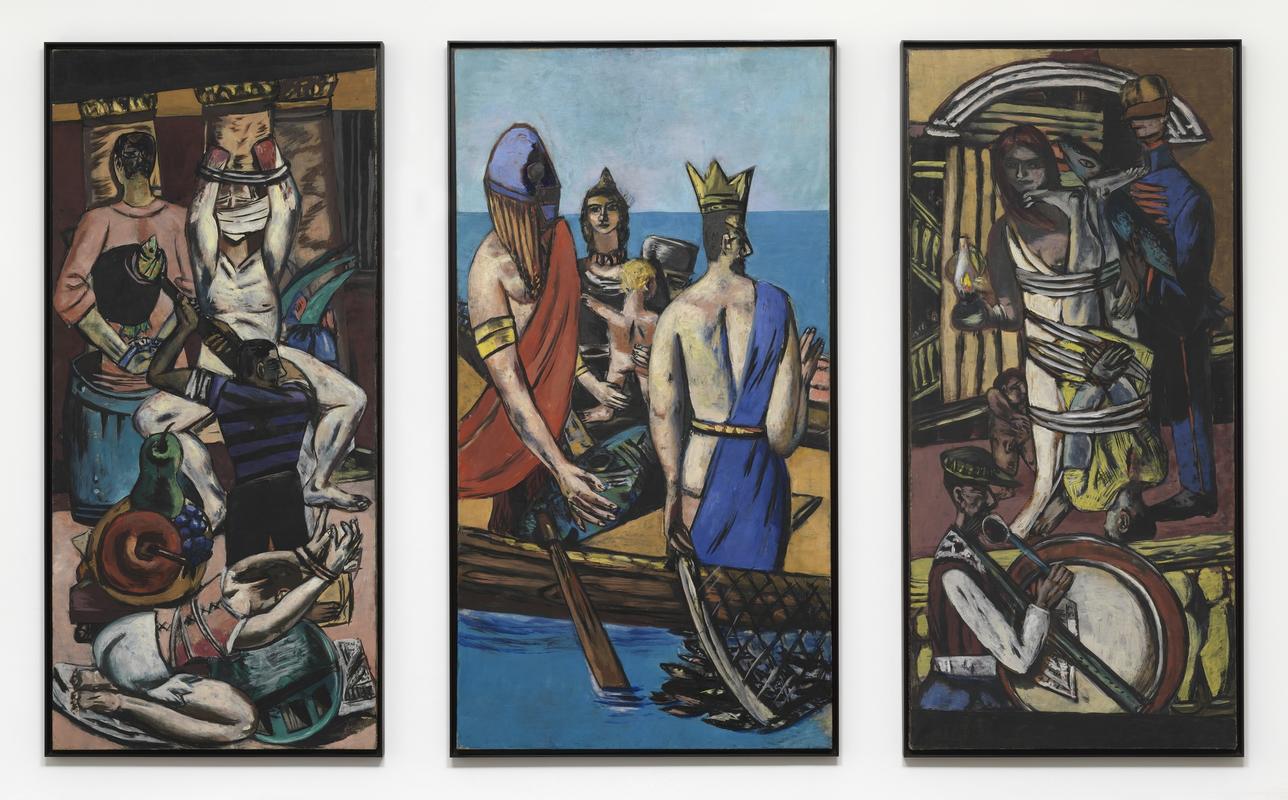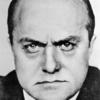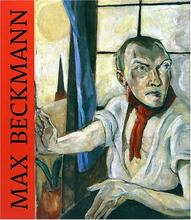More about Departure
- All
- Info
- Shop

Contributor
Max Beckmann said that his painting Departure didn’t have a political message, but we see right through that.
Ken Johnson of The New York Times described Max Beckmann’s Departure as “one of the saddest paintings in the history of modern art.” It also happens to be one of the most disturbing. This painting was made just as Hitler rose to power in Germany and the Nazis forced Beckmann out of his job as a professor of art at Stadel Art School in Frankfurt, where he had been living and thriving for the past seventeen years. He moved to Berlin in an effort to protect himself, but the psychological damage, which was already a large part of Beckmann’s life as a veteran of World War I, was done.
That was when Beckmann thought up this highly disturbing triptych. On the left side there are people being tortured in all kinds of horrifying ways. On the right side, there is a woman who has a man tied upside down to her while she is ushered forward by a bell hop-looking guy. There is also someone, who should probably be helping this woman, playing the drums. And finally, in the middle is the peace scene, the scene that everyone wishes existed without the other two parts. It features four figures in a boat, one of which is a baby, departing for a better life. This is the hope that exists between scenes of terror. The artist said of this panel, "The King and Queen have freed themselves... The Queen carries the greatest treasure - Freedom - as her child in her lap. Freedom is the one thing that matters - it is the departure, the new start." Beckmann insisted that this painting didn’t have a political message but he also hid the painting in his attic away from the Nazis and labeled the back of it, “Scenes from Shakespeare’s Tempest.” So that seems like a cover.
When this painting was finished, one of Beckmann’s patrons asked him to remove the side panels so that she could just have the middle part. He told her in polite terms to shove off and that the three panels described Germany in the 1930s and as such belonged together, confirming the work's political tone.
Sources
- Johnson, Ken. "‘Max Beckmann In New York,’ A Belated But Full-Blown Homage To A German Modernist." Nytimes.com. N.p., 2016. Web. 2 Nov. 2018. https://www.nytimes.com/2016/10/21/arts/design/review-max-beckmann-in-n…
- Kessler, Charles S. "Artchive - Beckmann: "Departure"." Artchive.com. N.p., 1970. Web. 2 Nov. 2018. http://www.artchive.com/galleries/beckmann/beckmann.html
- "Max Beckmann. Departure. Frankfurt 1932, Berlin 1933-35 | Moma." Moma.org. N.p., 2012. Web. 2 Nov. 2018. https://www.moma.org/collection/works/78367
- "Max Beckmann Most Important Art | Theartstory." The Art Story. N.p., 2018. Web. 2 Nov. 2018. https://www.theartstory.org/artist-beckmann-max-artworks.htm
Featured Content
Here is what Wikipedia says about Departure (Beckmann)
Departure is an oil-on-canvas triptych by German artist Max Beckmann begun in Frankfurt in 1932 and completed in Berlin from 1933 to 1935. It was the first of nine triptychs that the artist created. The panels, according to Beckmann, are named The Castle (left), The Homecoming (middle) and The Staircase (right). The paintings have all the same height (215.5 cm) and the middle panel, with 115 cm, is only slightly wider than the other two, which have 99.5 cm in length. It is one of his best-known triptychs and is held at the Museum of Modern Art, in New York.
Check out the full Wikipedia article about Departure (Beckmann)













